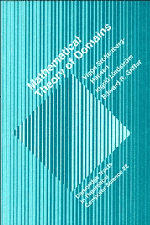Book contents
Chapter 12 - Domains as Models of Formal Theories
Published online by Cambridge University Press: 05 June 2012
Summary
The λ-calculus was originally introduced as a tool for the study of functionality and higher order logic. Later it was shown that the number-theoretic functions representable in the λ-calculus were precisely those represented in radically different approaches to the notion of computability such as Turing machines or the schemes defining the partial recursive functions we have seen previously. Thus as a tool for studying computability, the λ-calculus is completely general. It also inspired early work on the programming language LISP and can itself be viewed as a high level programming language. Though entirely too cumbersome for everyday programming needs there are well known methods for representing programs, written in standard imperative programming languages like FORTRAN, as λ-terms (see Tennant [1981]). One reason for doing so is in order to understand these programs as functions in the standard mathematical sense of the word. Once these terms are then modelled or interpreted in a mathematical structure like a Scott–Ershov domain one can claim to have understood them in terms of the functions they are names for or denote, hence the terminology denotational semantics. Although the study of the denotational semantics for programming languages falls outside the scope of this book, we will summarize in this chapter the results showing that the λ-calculus itself can be modelled using domains. In doing so we hope that we will have provided at least the basic material needed to make the transition from the mathematical theory of domains to the topic of program semantics.
- Type
- Chapter
- Information
- Mathematical Theory of Domains , pp. 310 - 331Publisher: Cambridge University PressPrint publication year: 1994

